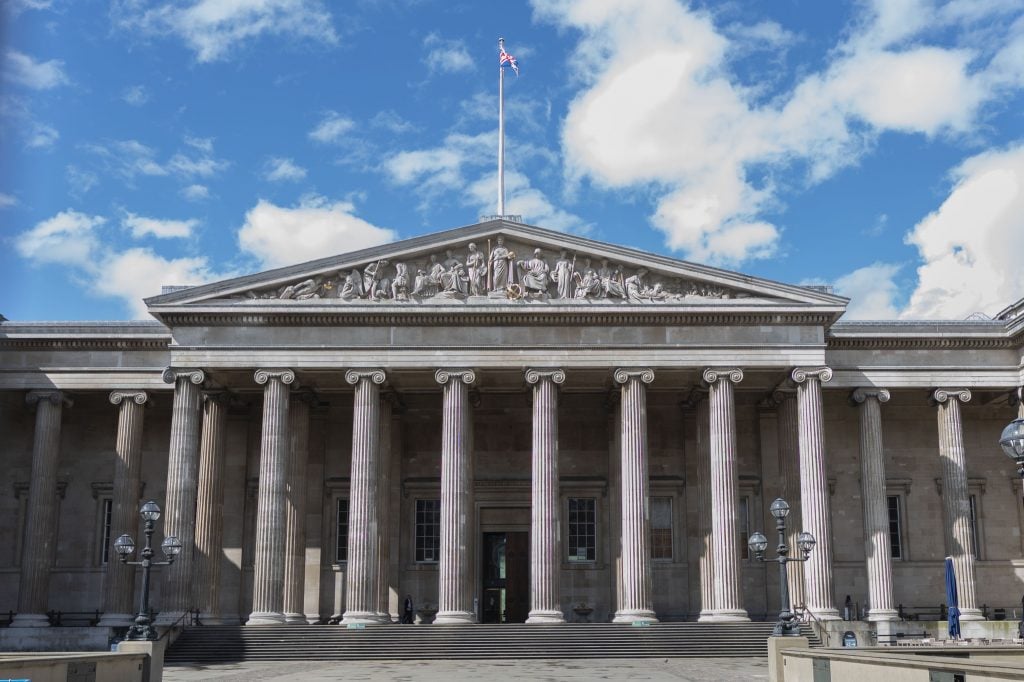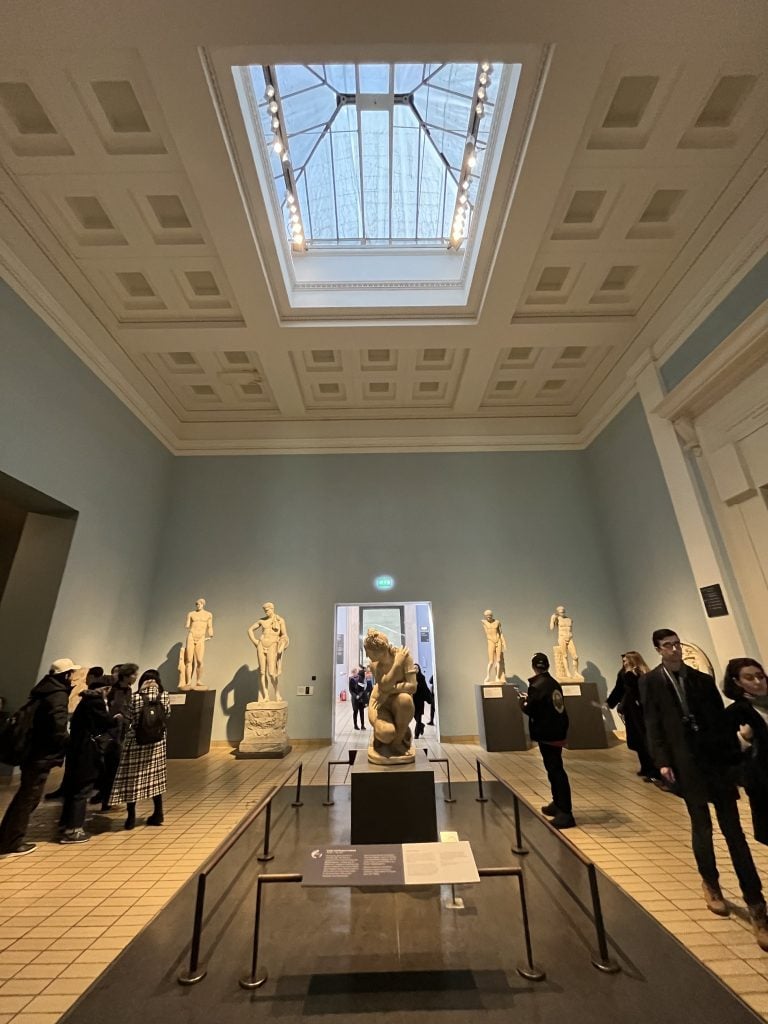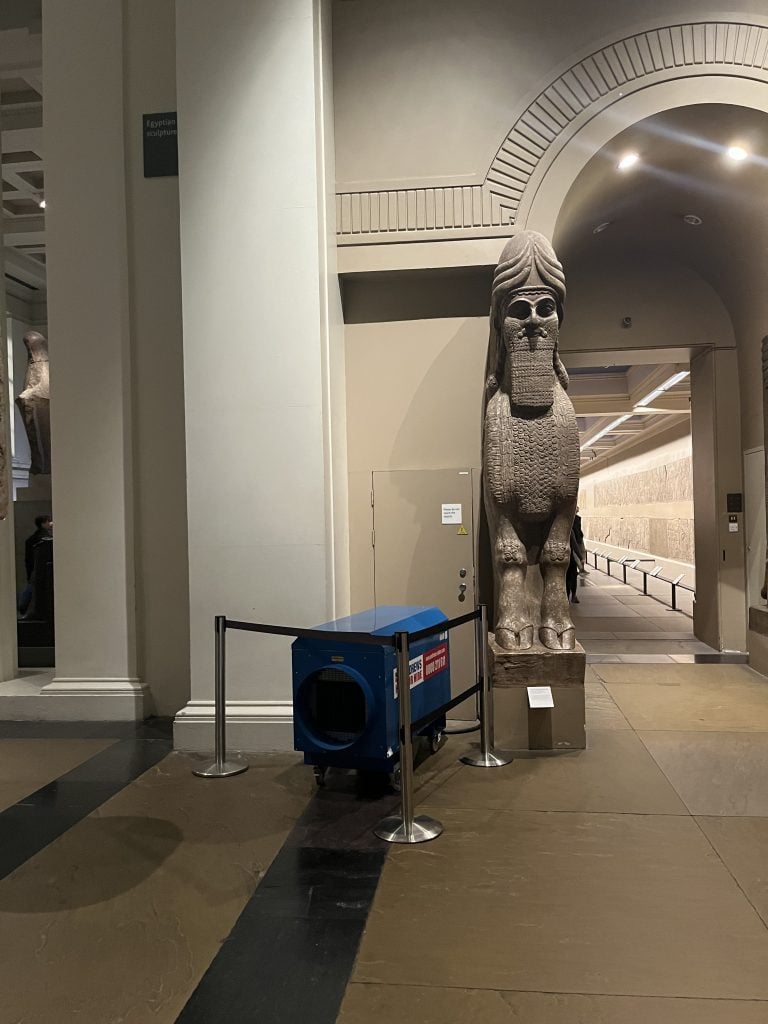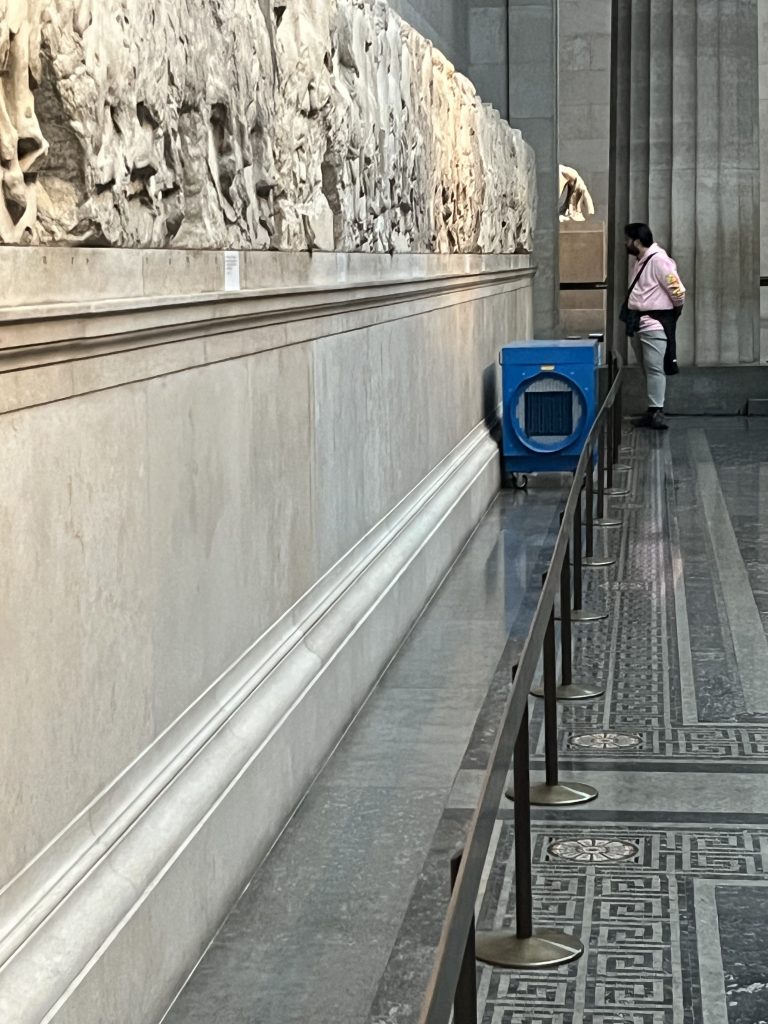Museums & Institutions
Crumbling Roof Raises Conservation Concerns at the British Museum
Thin sheeting covers missing glass window panes and industrial heaters have been placed in frigid galleries alongside priceless antiquities.

Thin sheeting covers missing glass window panes and industrial heaters have been placed in frigid galleries alongside priceless antiquities.

Cristina Ruiz

As the British Museum works to retrieve some 2,000 stolen gems and small objects, allegedly taken from its storerooms by one of its own curators, it is facing another challenge to the collections in its care: The dilapidated state of its Greek, Roman, and Assyrian galleries.
The antiquated infrastructure in these rooms, which include the gallery displaying the Parthenon Marbles, is crumbling. Roofs leak, the climate control is failing, paint is peeling, and floor tiles are cracked.
Two adjoining galleries, one displaying Greek and Roman sculptures (Gallery 23) and the other masterpieces of Assyrian art (Gallery 8), are now exposed to the elements but for a thin sheet of material stretched over large skylights in the ceiling to cover the opening where reinforced glass panels should be.
Artnet News first noticed the missing glass panels on a visit to the museum on January 23. As successive storms battered Britain that week, the material covering the skylights flailed and flapped in the high winds and rain.

A Roman marble statue of a crouching Venus, dating from 1–200 C.E., is positioned directly underneath a skylight missing its reinforced glass panels in Gallery 23. Photo: Cristina Ruiz.
In Gallery 8, which houses massive sculptures and carved stone panels from the palace of the Assyrian King at Nimrud in modern-day Iraq, the material covering the skylight is torn with the sky clearly visible through the gaps.
To counteract the cold air entering the gallery and the failing climate control, an industrial floor heater has been positioned at the feet of an imposing human-headed winged bull, dating from 865–860 B.C.E., which stands near a human-headed winged lion. Known as Lamassu, these protective spirits are believed to have guarded the entrance to the Assyrian king’s private apartments and a banquet hall at Nimrud, respectively. Their companion pieces are in the collection of the Metropolitan Museum in New York.
Other heaters have been placed throughout the Assyrian galleries and in the large hall containing the Parthenon Marbles just a few feet away.

A heater has been placed at the feet of a winged bull in Gallery 8 to counteract the room’s failing climate control. Photo: Cristina Ruiz.
These rooms are all in the Western block of the museum, the oldest part of the building, mainly dating to the 19th century. It is to be revamped first as part of the museum’s £1 billion ($1.26 billion) masterplan to overhaul all of its galleries and redisplay its collections. A competition to select an architect for the modernization of the Western block will be launched this spring. Although the museum declines to say when the work is expected to begin, Artnet News understands that it is planned for the end of this year or the beginning of 2025.
When Artnet News contacted the British Museum, three weeks after first noticing the missing glass in the galleries’ skylights, we were told that the glass panels would not be replaced until the revamp of the entire block begins.
“We have been clear on a number of occasions that the roof requires wholesale replacement and renewal, which we will embark on as part of the museum’s masterplan. There are currently temporary measures in place in some galleries to provide protection from water ingress to the collection, our visitors and staff until these works begin,” a spokesperson said in an email.
The question is: Will the archaic infrastructure in these galleries last for another year until it is fully upgraded?

A heater in the museum’s Grand Hall housing the Parthenon Marbles. Photo: Cristina Ruiz.
The shoddy state of these rooms has been noted many times before. In 2018, footage of water leaking into the hall housing the Parthenon Marbles was broadcast on Greek television. Lina Mendoni, then the Greek Minister of Culture, noted that this “reinforces Greece’s rightful demand for the sculptures’ permanent return to Athens.”
Mendoni spoke out again against the museum’s care of Greek antiquities on February 17 after a fashion show was staged directly in front of the Parthenon Marbles.
Meanwhile, in December, the British Museum announced that the oil and gas company BP will provide £50 million ($63 million) over 10 years to help fund its masterplan. While other high-profile art institutions, including Tate and the Royal Shakespeare Company, have succumbed to public pressure and protests from environmental activists and ended their partnerships with BP, the British Museum said in a press release that it is “very grateful for BP’s support at this early stage of the masterplan.”
Responding to the announcement, protestors from the activist group Energy Embargo for Palestine which “demands” that the British Museum sever its ties with BP, a company it describes as “profiting from Israel’s colonial genocide,” occupied the museum’s Great Court for several hours on February 11 while calling for an “international energy embargo on Israel.”